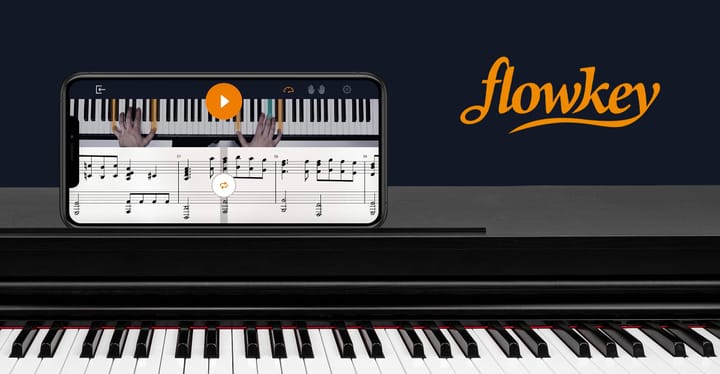Bastien Piano Method: Is it the Right One For You?

As a piano teacher working with children and adults daily, I’ve spent countless hours with various piano methods, including the Bastien Piano Method. If you’re deciding which books to use on your journey to learning piano, let me share what I’ve learned to help you make an informed choice.
The good news? You can play piano, no matter your age or starting point. I promise!
What Is the Bastien Piano Method?
The Bastien Piano Method is a traditional, step-by-step curriculum designed to teach piano to beginners and beyond. It offers options tailored to different age groups and skill levels. While it’s a well-structured method that covers all the basics, it’s not my favorite for a few reasons.
First, the music can feel a little old-fashioned and uninspiring, which makes it tough to stay motivated. Second, the pacing is quick, which can make it harder for students to fully grasp new concepts before moving on.
One of my biggest concerns with the beginner books is their heavy reliance on fixed hand positions. For instance, students might think, “My pinky (finger 5) always plays G!” While this works initially, it doesn’t prepare them for more advanced music, where your hands need to move fluidly across the keyboard.
That said, the method does have its strengths. It’s clear, easy to follow, and offers a variety of books for different learning needs. Let’s dive into the details of each series.
The Bastien Series Options
1. The Very Young Pianist (Ages 4-7)
This series of three books is perfect for younger children. It starts with foundational concepts like finger numbers (1-5) and the musical alphabet (A-G), gradually building to reading music on the grand staff.
I like this series because it provides more time and practice for each new concept. Kids in this age group need that extra reinforcement to truly grasp what they’re learning. Compared to other Bastien books, this series is paced much better for young beginners. If you’re considering Bastien for a young child, this is the set I’d recommend.
2. Bastien Piano for the Young Beginner (Ages 5-7)
This two-book series—Primer A and Primer B—offers a slightly faster pace than The Very Young Pianist. It’s designed for children who are ready for more structured learning but still need extra time to build confidence before moving on to Level 1 of the Basics series.
3. Bastien Piano Basics (All Ages)
The Bastien Basics series is their flagship method, consisting of five levels: Primer, Level 1, Level 2, Level 3, and Level 4. Each level comes with five books:
- Lesson: Core instruction and songs.
- Theory: Exercises to understand the "why" behind the music.
- Performance: Repertoire pieces to build skill and confidence.
- Technique: Exercises to develop finger strength and agility.
- Sight Reading: Practice for reading new music fluently.
This series covers everything a beginner needs to build a solid foundation, but the pacing can feel rushed. For many students, I find myself adding extra songs and practice exercises before moving forward. The music itself is another challenge—it can feel uninspiring, which isn’t ideal for maintaining motivation.
4. Bastien Older Beginner Piano Course (Teens and Adults)
This series is aimed at teens and adults starting piano later in life. It consists of two levels, each with three books:
- Lesson Book: Core instruction.
- Favorite Melodies the World Over: Familiar tunes to enjoy.
- Musicianship for the Older Beginner: Theory and technique exercises.
There are also supplemental books, including Classic Themes by the Masters, Easy Piano Classics, Religious Favorites, and Solo Repertoire.
Unfortunately, the music in this series feels dated and doesn’t always resonate with older students. Out of all the Bastien series, this one is my least favorite because it doesn’t match the needs or tastes of most teens and adults.
5. Bastien Intermediate Piano Course
Here’s where Bastien shines. The Intermediate Piano Course is designed to bridge the gap between beginner books and more advanced classical repertoire—a gap that many methods struggle to address.
This series consists of three levels, each with four books:
- Repertoire (Lessons): Core pieces to build skill.
- Technique: Exercises for hand strength and flexibility.
- Theory: In-depth explanations of musical concepts.
- Multi-Key Solos: Pieces with key changes (sharps and flats).
I recommend this series for students who’ve completed a beginner course and are ready to move to the next level. It provides a nice balance of challenge and support.
6. Bastien Piano for Adults
This two-book series combines lessons, theory, technique, and sight-reading into a single book. It covers a mix of styles, including classical, jazz, folk songs, and original compositions.
While it’s convenient to have everything in one book, the music itself feels flat and uninspired—something I notice across the Bastien series. Accompaniment CDs are available, which can make the pieces more engaging.
My Overall Take
If you’re taking the traditional piano lesson route, the Bastien Piano Method may not be my first recommendation. The music tends to feel dry, and the pacing can be too quick for many learners. However, it’s a well-organized method with clear instruction, and it works well when paired with supplemental materials to keep things engaging.
If you don't want to learn the piano through traditional methods, read this article:

In the end, the best method is the one that works for you. Talk to your teacher about their approach, and don’t be afraid to mix and match materials. The key is finding something that keeps you motivated and excited to play.
Happy practicing, and enjoy your piano journey! 🎹





Comments ()